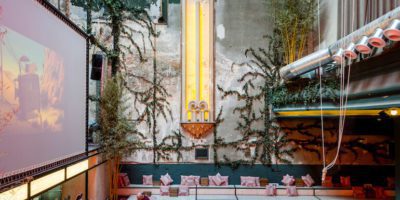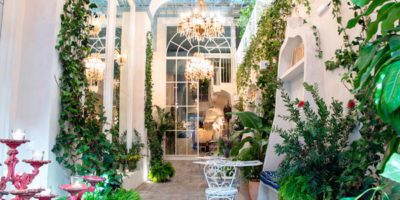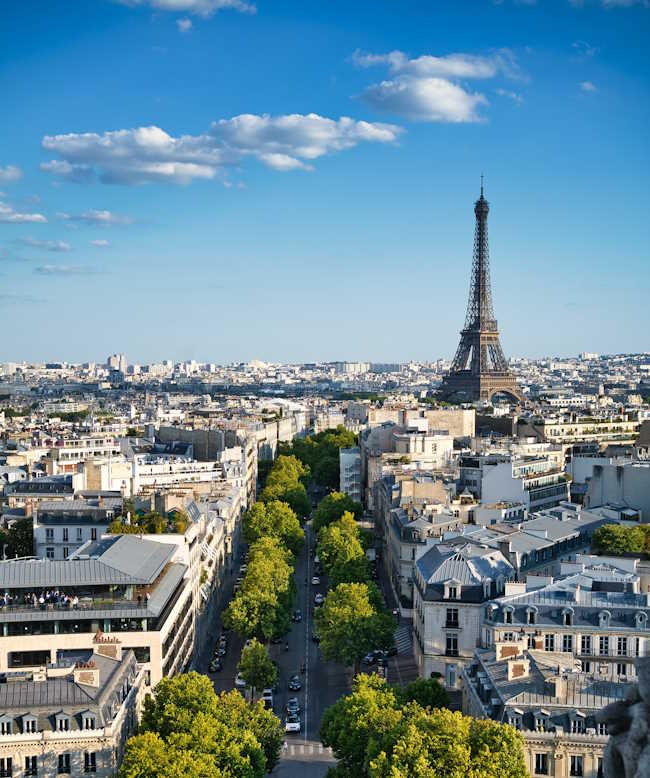Top 20 Facts About City of Madrid
Madrid is a beautiful Spanish city located in the heart of the country. Known for its sunshine, friendly people, and relaxing daily life, it’s a desirable place to pass the time. But even if you know some things about Madrid, this list is sure to teach you something new.
Whether you’re about to visit Madrid for the first time or you’ve been living there for years, this article is a good read. Keep scrolling to learn historical, gastronomical and more of the greatest facts about Madrid.
1. Today, Madrid is the capital of Spain
But it wasn’t always that way. The southwest city, Toledo, was the original capital of Spain until the 1500s when Madrid earned the title.
It only makes sense that Madrid would be the capital, since it sits in the very center of Spain. With around 6.5 million inhabitants, it’s also one of the most populous cities in Europe.
2. Madrid is the sunniest city in Europe
Can you believe that Madrid is actually the best place to lay out in the sun for a nice tan, compared to the many beaches of Europe?
With an average sunshine rate of around 250 days per year, this Spanish metropolis hardly sees the clouds. If you’re one of those people who’s easily affected by the weather, Madrid is your ideal home.
Naturally, this means that the heat can get pretty brutal, but summers are usually fair until August. During the hot months, you definitely need a fan. And every month, be sure to wear sunscreen.
3. Madrid is the birthplace of multiple celebrities
You know that a city is a great place to live when famous people grew up there. Among other stars, Madrid gave birth to celebs like Penelope Cruz, the well-known actress and Oscar winner, and the pop singer, Enrique Iglesias.
Of course, Madrid is not only a nice place to grow up, it’s actually a lovely city to spend your adult life. That’s why celebrities like Christiano Ronaldo live there with their families.
4. Madrid is one of the 4 richest cities in Europe
With an estimated GDP of 133 billion euros, Madrid is doing well economically. Sectors like government and technology are the most profitable for this local economy, and service jobs are the most prominent in Madrid.
One of the reasons why Madrid is a rich city is that it collects profit from various contrasting industries. It holds many corporation headquarters, but also lots of little restaurants. Therefore, Madrid is an easy place to find a job.
5. Madrid’s metro system is one of the largest in Europe
Public transportation in Madrid is known for being one of the largest and most efficient metropolitan networks. Between the underground metro and the buses that make rounds daily, the extensive system covers a vast area. The metro extends out to MAD, one of Europe’s largest commercial airports.
A student pass only costs 20 euros per month, and it includes the bus. For unlimited travel, this is a reasonable fee to pay at the machine every month, especially compared to a city like Paris where the price is triple. In order to get the student rate, however, you have to set up an appointment at the station and get the student card.
6. Madrid is one of the most popular study abroad destinations
Students from all over the world come to study in Madrid. One could argue that this is because Spanish is a common choice for second language studies, but there’s actually more to it than that.
Aside from the beautiful weather and pastel buildings, students are attracted to Madrid for its universities. One of the compelling campuses is the University of Salamanca, which is the oldest university in Spain and the fourth oldest in Europe. It was founded way back in 1218.
7. Madrid is the home to Real Madrid
Football fans and players will feel like a kid in a candy store in Madrid. Their home team, Real Madrid, is one of the best teams in the world. Rivals to FC Barcelona in the first division, the Madrileño athletes have been playing the sport continuously since the team’s creation in 1928.
With 13 championship wins, Real Madrid is considered the most successful team in Europe. Apart from this widely successful team, the city of Madrid is home to two other major football teams, Átletico de Madrid and Getafe.
8. Madrid hosts an annual pride festival
Madrid Pride is the name of the event, the purpose to celebrate the LGBT pride of Madrileños as well as foreigners who come to join the festival. Every year, the gay district of Madrid, Chueca, is covered in flags and filled with lively people and activities.
Chueca is one of the Best Neighborhoods in Madrid, thanks to the many shops and restaurants there, as well as the colorful culture that’s brought out by gay pride. On top of these highlights, Chueca is simply a pretty neighborhood.
9. The Golden Mile of Shopping is located in Salamanca, Madrid
Salamanca, another favorite district of Madrileños, is known for luxury. After all, it was Queen Isabella II’s neighborhood made specifically for the elite. Years later, there are plenty of restaurants, museums and shops to enjoy.
In fact, the exclusive Salamanca shopping district is called the Golden Mile of Shopping by many. Among the streets of the neighborhood of the political and financial elite, you’ll find stores like Versace, Dolce & Gabanna and Louis Vuitton.
10. The oldest restaurant in the world is located in Madrid
Sobrino de Botín is a classic Spanish restaurant that was founded in 1725. It is officially the world’s oldest restaurant. An even more shocking fact is that the fire oven hasn’t been extinguished since the first day they opened.
That’s about 300 years of fire! Talk about traditions. Sobrino de Botín is known for their cochinillo asado (roast suckling pig), but all of their food is delicious. Naturally, their recipes have been perfected over the years.
The oldest restaurant in the world actually made it on our list of the Best Restaurants in Madrid. If one thing’s for sure, it’s that the Spanish know how to eat well, and there is no shortage of fine cuisine in Madrid.
11. Madrid is popular among tourists
The capital of Spain sees more than 6 million tourists per year. People come to taste famous food like tapas, paella, and octopus. Bull fighting is also a huge attraction for foreigners, who come to witness the ancient event that gives a taste of traditional Spanish culture.
Another common stop on the tourist agenda in Madrid is the Mercado de San Miguel, which is a luxury market that is always crowded with visitors. Here, you can find meats, cheeses, wine, and many different foods to taste as you walk around.
12. Madrid is ancient
The land that now holds Madrid was said to have been inhabited since the stone age, dating back to around 860 A.C. But the official city of Madrid was not established until the 9th century.
In the 1560s, Phillip II set up his court in Madrid, beginning the development of the city as an administrative center. Since then, Madrid has experienced the reign of Isabella II, civil war, and dictatorship.
13. The Moors were responsible for the initial development of Madrid
There is clearly a lot more to this city than meets the eye. It turns out that the Muslims of the Middle Ages were the ones who took over Madrid and made it into a legitimate civilized city.
The Moors ruled Madrid through the 11th century. Among other cultural impacts that the Moors had on the region, they left a complex irrigation system that allowed the agricultural industry to flourish.
Perhaps you have read the famous poem, “Ay de mi Alhama”, which depicts the fall of Granada. This ultimately successful attempt of the Christian army to claim back the land marked the end of Moorish rule in Spain. It was the year 1086 when Alfonso VI caputred back the area.
14. Much of Madrid was built by the Habsburgs
This historical influence can be seen in many of the modern sites of Madrid, like Plaza Mayor. This center forms part of El Madrid de los Austrias, the old quarter of Madrid, which extends between the metro stops Sol and Opera.
But the name isn’t random. For a brief history lesson, the Habsburgs was the royal dynasty that ruled the Holy Roman Empire, and the Spanish Empire was an ally of the Habsurgs. During the Siglo de Oro, or Golden Age, Spain experienced substantial economic growth.
It was during this time that the Spanish Habsburgs commissioned several constructions to commemorate their wealth and power, and the structures form an integral part of the city of Madrid and its culture today.
The Palacio de Santa Cruz is another memorable building of the old town. Shockingly, this beautiful structure used to be a prison where convicts would stay until they were to be executed at Plaza Mayor. This rich history is part of what makes Madrid such a special city.
15. Madrid was once ruled by a dictatorship
From 1936, to 1975, Francisco Franco, general and politician, ruled Spain as a dictator. He came into power during the civil war when he became the dominant rebel military leader.
Franco ruled Spain until his death in 1975. During his reign, there occurred massive migration and industrialization in the south of Madrid. Franco lived, fought battles, and died in Madrid.
16. The only monument to the devil is on display in Madrid
Retiro Park is a huge and breathtaking park near the luxurious neighborhood, Salamanca. You can actually rent boats and row around a lake in this park. But one thing you can do here that you can’t do anywhere else is observe a momument to the devil.
The fountain is dedicated to the “fallen angel”. While the statue used to be in the Prado museum, the director of the museum suggested that it be moved to where it sits now for all to admire its uniqueness.
17. Madrid is the best place for museum fanatics
You know that you’re going to find the most prestigious art pieces in a city when it’s deemed to have a “Golden Triangle” of museums. The top three are only a few of the numerous museums found in Madrid.
The Golden Triangle is formed by the Paseo del Prado, the Museo Reina Sofía, and the Museo Thyssen-Bornemisza. At these legendary art galleries, the work of famous artists like Goya and Velázquez can be found.
18. Madrid holds an annual Flamenco Festival
Since 2005, Suma Flamenca is an important festival that showcases many dancers, singers, and guitar players. The event is based out of Teatros del Canal and spreads out into more of the city as well.
The event takes place in June and is one of Spain’s finest flamenco events. A unique feature of the festival is that it takes place in a wide range of places around the city.
19. Madrileños take their siestas seriously
In Madrid, many stores actually close for an afternoon nap. The Spanish prefer to sleep for a few hours after lunch before returning to work. This means that stores may be closed from about 2 to 5pm. But, they usually open again until around 8 or 9pm.
During the summer, the siesta effect is amplified. Since August is the month where most people are on vacation, there are fewer stores open. But the ones who continue to operate make sure to take full advantage of the siesta during August. Even the post office closes mid-day, though it stays open during the other parts of the year.
20. King Felipe VI and his family live in Madrid
Felipe and his wife, Queen Letizia, reside on the outskirts of Madrid in the Palacio de la Zarzuela. The palace is located near the Palacio del Pardo and it was built around 1630.
In fact, the king was actually born in Madrid. He serves as head of state and commander-in-chief of the Spanish Amed forces. His military rank is Captain General.
***
After learning all the greatest facts, the biggest take-away we get from Madrid is that it is a very old, culturally-rich city. Not only that, modern life here is still bustling.
When a city has two distinct areas that are named “golden” for both shopping and museums, you know it’s a good place to explore. Obviously, many people who spend their time in Madrid love the experience and feel that it brings, from affordable living to simple traditions that make life enjoyable.
Moreover, Spain’s capital city has become a leading economic, industrial, educational and technological center, with influence worldwide. It has been an intriguing cultural hot spot since the Stone Age, literally.
Planning a trip to Paris ? Get ready !
These are Amazon’s best-selling travel products that you may need for coming to Paris.
Bookstore
- The best travel book : Rick Steves – Paris 2023 – Learn more here
- Fodor’s Paris 2024 – Learn more here
Travel Gear
- Venture Pal Lightweight Backpack – Learn more here
- Samsonite Winfield 2 28″ Luggage – Learn more here
- Swig Savvy’s Stainless Steel Insulated Water Bottle – Learn more here
Check Amazon’s best-seller list for the most popular travel accessories. We sometimes read this list just to find out what new travel products people are buying.











